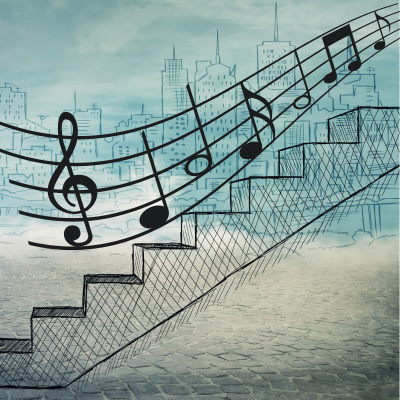By January Street Studios • June 14, 2025
 Music education has always been a dynamic field, adapting to the needs of students and the realities of the world around us. In recent years, the classroom landscape has shifted dramatically. While the foundational skills taught through traditional music education remain invaluable, the rise of digital tools is opening new doors for students and educators alike. Rather than replacing time-honored methods, digital resources are enhancing and expanding what’s possible in every rehearsal, lesson, and practice session.
Music education has always been a dynamic field, adapting to the needs of students and the realities of the world around us. In recent years, the classroom landscape has shifted dramatically. While the foundational skills taught through traditional music education remain invaluable, the rise of digital tools is opening new doors for students and educators alike. Rather than replacing time-honored methods, digital resources are enhancing and expanding what’s possible in every rehearsal, lesson, and practice session.
One of the most transformative tools for today’s music classrooms is the Digital Audio Workstation (DAW). Platforms like Soundtrap and BandLab allow educators to record each section of a song—winds, brass, percussion, vocals, strings, and more—on separate tracks. Students can then solo or mute individual tracks, making it easy to focus on their part, hear how it fits into the ensemble, and practice along at their own pace.
With a DAW, students can even record themselves playing with the ensemble tracks. This provides an immediate, objective way to evaluate pitch, intonation, sound quality, and timing. Teachers can offer targeted feedback, and students have the opportunity to listen back, reflect, and improve. For students who may be shy about performing live, this technology creates a safe, supportive space to grow their skills and confidence.
Expanding Cognitive Skills with Online ResourcesBeyond performance, digital resources are revolutionizing how students develop their understanding of music theory. Websites like MusicTheory.net offer interactive exercises in pitch identification, interval recognition, key signature and chord construction, and scale building. These tools make abstract concepts concrete and accessible, giving students multiple ways to demonstrate their understanding.
Not every student will be able to perform every concept on their instrument right away, but digital theory exercises allow them to show what they know cognitively. This is especially powerful for students who learn differently or need more time to develop their performance skills. Teachers can track progress, identify areas where students need more support, and celebrate growth in both knowledge and musicianship.
Blending the Best of Both WorldsThe integration of digital tools into music education is not about replacing the rich traditions of ensemble playing, private lessons, or music literacy. Instead, it’s about giving educators and students more ways to connect, create, and succeed. By blending DAWs and online resources with traditional instruction, music teachers can reach every learner, foster creativity, and prepare students for a world where technology and artistry go hand in hand.
As the face of music education continues to change, embracing digital tools ensures that every student has the opportunity to make music, understand music, and find their unique voice—both in the classroom and beyond.